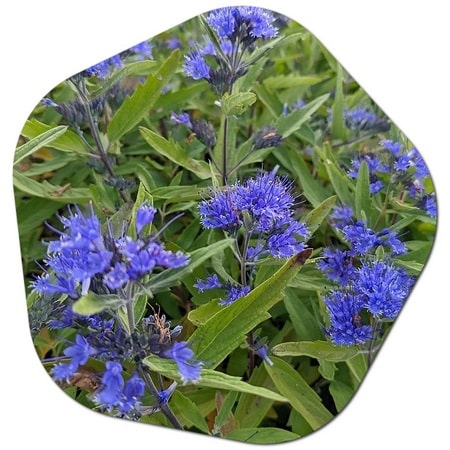Caryopteris clandonensis, commonly known as bluebeard or blue spirea, is a deciduous shrub that typically reaches a height of 2 to 4 feet (60 to 120 centimeters) with a similar spread. The exact height can vary depending on the specific cultivar, growing conditions, and how it is pruned and maintained. This plant is known for its fragrant blue to violet-blue flowers and attractive gray-green foliage. It is a popular choice in gardens and landscapes due to its compact size and ornamental qualities.
How to care for the Arthur Simmonds plant “Arthur Simmonds” is not a specific plant species, but rather the name of a person. It’s possible that you might be referring to a plant cultivar or a plant with a common name that includes “Arthur Simmonds.” To provide proper care instructions, it would be helpful to know the specific plant species or variety you’re referring to.
If you can provide the scientific name or the common name of the plant you’re inquiring about, I’d be happy to offer specific care guidelines for that particular plant.
Information about Caryopteris x clandonensis Arthur Simmonds
Caryopteris x clandonensis ‘Arthur Simmonds’ is a cultivar of Caryopteris, commonly known as bluebeard or blue spirea. It is a deciduous shrub appreciated for its attractive blue-violet flowers and aromatic foliage. Here is some information about Caryopteris x clandonensis ‘Arthur Simmonds’:

- Appearance: ‘Arthur Simmonds’ is a compact, mounding shrub that typically reaches a height of 2 to 3 feet (60 to 90 centimeters) with a similar spread. It has fine-textured, gray-green to silvery leaves that emit a pleasant fragrance when touched.
- Flowers: This cultivar is known for its profusion of small, tubular, and deep blue to violet-blue flowers. The flowers appear in late summer and continue into early fall, attracting pollinators such as butterflies and bees.
- Growing Conditions: ‘Arthur Simmonds’ prefers well-drained soil and full sun to light shade. It can tolerate a range of soil types but thrives in moderately fertile and well-draining soil. Once established, it is drought-tolerant and relatively low-maintenance.
- Pruning: You can encourage a bushier and more compact growth habit by lightly pruning Caryopteris x clandonensis ‘Arthur Simmonds’ in the spring. Prune back the previous year’s growth to a few inches above the ground to promote vigorous new growth and prolific flowering.
- Winter Protection: In colder climates, it is advisable to apply a layer of mulch around the base of the plant in late fall to help protect the roots during winter.
- Pests and Diseases: Caryopteris is generally resistant to many common pests and diseases. However, it can be susceptible to powdery mildew, particularly in humid conditions. Ensure good air circulation around the plant to reduce the risk of mildew.
- Landscaping Uses: ‘Arthur Simmonds’ is commonly used in gardens and landscapes as an ornamental shrub. Its vibrant blue flowers and aromatic foliage make it an attractive addition to mixed borders, perennial beds, and butterfly gardens.
- Wildlife Attraction: The flowers of Caryopteris x clandonensis are known to attract pollinators, making it a valuable addition to pollinator-friendly gardens.
Caryopteris x clandonensis ‘Arthur Simmonds’ is a well-regarded cultivar known for its striking flowers and aromatic foliage. It is relatively easy to care for and can make a lovely addition to your garden or landscape, providing color and interest in late summer and early fall when many other plants may be past their peak.
